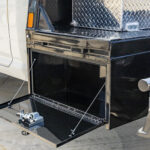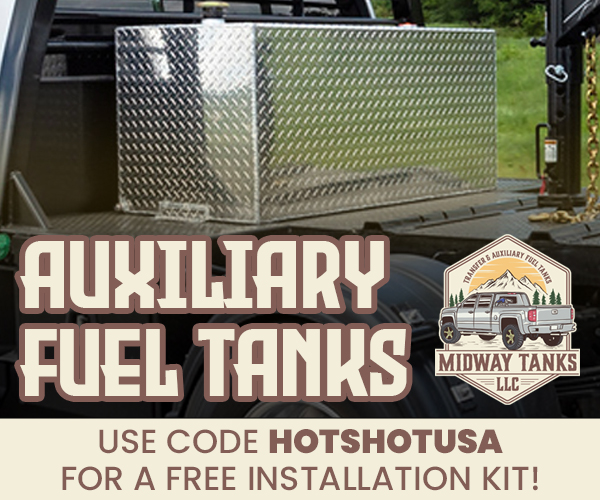Flatbeds vs truck beds is a topic we’ve been thinking about for several weeks. I don’t know where it came from. Maybe from all the posts on our groups about getting pulled over, written up or receiving warnings for over 65-foot length laws. Maybe it was the beautiful CM Truck beds that we haul occasionally from Oklahoma.
Somewhere recently, I flipped from Team Truck bed to Team Flatbed. No, I still have a Ram 3500 with a truck bed, and it has been a workhorse for me. Though, as she gets older, I am starting to read the writing on the wall. I have started looking into my next truck and getting a CM flatbed. Hopefully a CM flatbed with ALL the bells and whistles… Headache rack, Auxiliary fuel tanks, extra toolboxes. If you have read some of our posts, Blog articles or e-book, you know we are a gadget, tool, and organizational freaks. Everything I have has its own place and I know where to find it when I need it. I have a tool or gizmo for everything. When I see all the toolboxes and organization on some of the CM Truck Beds Flatbeds, it gets me very excited.
Flatbeds vs Truck Beds: Problem with standard truck beds
So what is the problem with a standard truck bed and a 40 foot Gooseneck trailer? There are Federal laws in many states including Texas that can cause massive headaches.
A truck and semitrailer combination may not exceed 65 feet in overall length. It is not a new law and has been on the books for many years. This hasn’t been a problem for most, and even today, it is not a problem for most. I have never failed an inspection or pulled over for it. HOWEVER, I mentor a lot of new drivers by answering DM messages, texts and calls. I also see and approve hundreds of posts on our ten plus groups, websites, and Instagram, etc. I have been seeing posts where drivers are being measured, written up or warned (which is worse than a ticket. you can fight a ticket but not a warning). Violations are on the uptick and increasing in volume. Sure, certain states are worse. Texas, Louisiana and Oklahoma are the ones that come to mind but maybe that is because that is my homebase that I notice more.
Just a week or so back, one of our book purchasers asked me “What can I do to remedy this?”. I told them, short of pulling off your bed and registering it as a tractor, you were hit. Or, you could do like my brother-in-law did and buy a 38-foot trailer. For all practical purposes, no one ever questioned him or was it ever an issue when loads called for 40 foot. He got out of the business and was able to sell his trailer immediately because there is such a high demand for them because of this issue.
Advantages of flatbeds
1. The ability to make a 90 degree turn without damage to the truck bed.
2. You can haul just about anything on a flatbed as long as you strap it down good and you can strap from 3 sides
3. You can load with a forklift from both sides or the back with no damage to your truck bed.
4. You can add tool boxes, lights, 5th wheel or gooseneck, fuel cells, and work space.
Advantages of truck beds
1. You can toss anything in the back and not have to strap down.
2. You can use it for personal use. Drive without a trailer to carry small loads, equipment and your dog ( I don’t agree with this but I see it often).
3. Fuel cells, headache rack and toolboxes can be added as well. I have all except the headache rack.
4. Resale value is higher than a flatbed.
5. Looks better in most cases. It just depends on your choice of Flatbed model.
So, at the end of the day, it is your choice and your business. Both options have upside but the Federal regulations could be the biggest factor in which option you choose. We would love to hear from you on this so feel free to leave a comment below!














